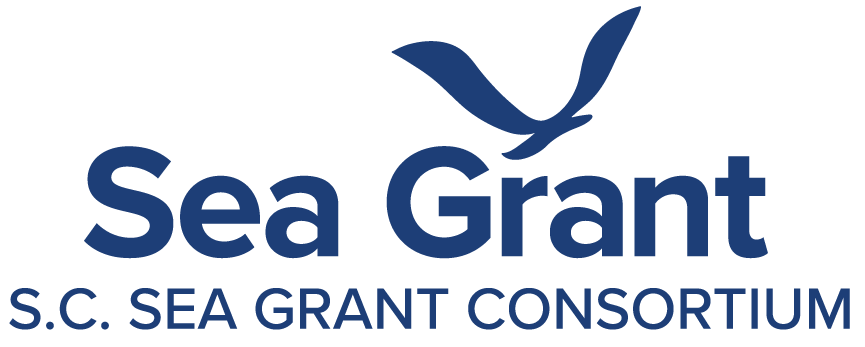![]()
Coastal Heritage Curriculum Connection
Explore Curriculum Connection guides, which are written to accompany each issue of Coastal Heritage, a quarterly publication of the S.C. Sea Grant Consortium.
Coastal Heritage, Fall 2018 issue: First Impacts: Natural Systems Face Sea-Level Rise
Focus Questions
- What are the differences among barrier islands, sea islands, and hammock islands?
- How has the rate of sea-level rise changed over the past century along South Carolina’s coast?
- How is sea-level rise predicted to impact salt marshes? What factors influence whether salt marshes will accrete or retreat?
- How is sea-level rise predicted to impact hammock islands? Impoundments?
- What are the impacts of sea-level rise on cultural relics, such as shell middens?
Use the Curriculum Connection to address these South Carolina Standards and Performance Indicators:
Social Studies
2-4.3 Recognize the cultural contributions of Native American tribal groups, African Americans, and immigrant groups.
Science
4.L.5B.2 Construct explanations for how structural adaptations (such as the types of roots, stems, or leaves; color of flowers; or seed dispersal) allow plants to survive and reproduce.
4.L.5B.3 Construct explanations for how structural adaptations (such as methods for defense, locomotion, obtaining resources, or camouflage) allow animals to survive in the environment.
5.E.3B.2 Develop and use models to explain the effect of the movement of ocean water (including waves, currents, and tides) on the ocean shore zone (including beaches, barrier islands, estuaries, and inlets).
5.E.3B.3 Construct scientific arguments to support claims that human activities (such as conservation efforts or pollution) affect the land and oceans of Earth.
6.L.4B.2 Obtain and communicate information to explain how the structural adaptations and processes of animals allow for defense, movement, or resource obtainment.
6.L.5B.3 Develop and use models to compare structural adaptations and processes that flowering plants use for defense, survival, and reproduction.
H.B.6B.2 Analyze and interpret quantitative data to construct an explanation for the effects of greenhouse gases (such as carbon dioxide and methane) on the carbon cycle and global climate.
H.E.6A.5 Analyze and interpret data to describe how the quality of the water in drainage basins is influenced by natural and human factors (such as land use, domestic and industrial waste, weather/climate conditions, topography of the river channel, pollution, or flooding).
H.E.5A.8 Analyze scientific arguments regarding the nature of the relationship between human activities and climate change.
H.E.3B.2 Construct scientific arguments to support claims that responsible management of natural resources is necessary for the sustainability of human societies and the biodiversity that supports them.
Lesson Links and Educational Resources
The From Seeds to Shoreline® program is South Carolina’s only salt marsh restoration program for K-12 students and teachers. The program is coordinated by the S.C. Sea Grant Consortium, in partnership with Clemson Extension and the S.C. Department of Natural Resources, and is open to any formal or nonformal educator. Learn more about this free program and how to become involved in restoring areas along our coastline! (K – 12th)
The National Oceanic and Atmospheric Administration’s (NOAA) Sea Level Rise Viewer is an excellent tool to discover the potential impacts of higher sea level in specific areas. Explore how areas around your community are the most vulnerable to various levels of sea-level change. Specifically, with a one-foot rise in sea level, what areas will be the most impacted? What about two-feet? What are some ideas for how to prepare for these changes? (4th – 12th)
Salt marsh retreat and drowning are common ecological responses to rising sea levels. Explore the impact on sea-level rise with this activity from the University of Rhode Island. (9th – 12th) The National Estuarine Research Reserve (NERR) Estuaries 101 Curriculum provides a wealth of salt marsh and estuary lessons that highlight the different NERR locations across the United States. Check out their climate-related activities , including Water Going Up, Water Going Down and Migrating Mangroves and Marshes . (6th – 12th)
Field Trip Opportunities
Immerse your students in the beauty of the Lowcountry on this one-mile, self-guided trail that dates back 4,000 years! This trail, located in Awendaw, S.C. and part of the Francis Marion National Forest, has a 120-foot long boardwalk that takes visitors past a shell midden (shell ring) and offers five overlooks along the way of salt marsh and tidal creek habitat.
Sign up for one of Caw Caw Interpretive Center’s numerous programs designed to teach students about the Lowcountry’s natural and cultural resources. Depending on the age of your students, standards-based programs cover a variety of topics and all are designed to explore our natural surroundings. Learn about habitats, former rice impoundments, and other interesting topics.
